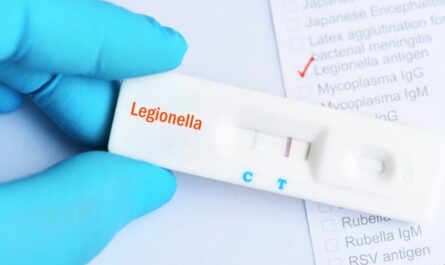Definition and Structure of Liposomes
Liposomes are artificial vesicles made of phospholipid bilayers that can encapsulate both hydrophilic and hydrophobic drugs. Their structure essentially mimics cellular membranes allowing them to safely deliver a variety of drug payloads. A liposome is composed of an aqueous core surrounded by one or more lipid bilayers. The hydrophilic heads of the lipids face outward on both sides of the bilayer forming a stable shell that protects the inner contents. By exploiting this structure, researchers are able to load both water-soluble drugs within the core and water-insoluble drugs within the bilayer itself.
Targeting and Enhanced Drug Delivery
One major advantage of using Liposome Drug Delivery is the ability to modify their lipid composition and surface properties to achieve active or passive targeting of specific cell and tissue types. Liposomes can extravasate from leaky blood vessels in tumor tissues through the enhanced permeability and retention (EPR) effect. Their long circulating properties allow accumulation at diseased sites. Incorporating ligands that bind to receptors overexpressed on cancer cells enables active targeting. PEGylated liposomes exhibit improved pharmacokinetics and biodistribution compared to conventional liposome formulations. Antibody and protein conjugates further help deliver drugs directly into the cytoplasm or nucleus of target cells. Such targeted delivery enhances efficacy while reducing side effects.
Improved Solubility and Stability
Many potent anti-cancer drugs are hydrophobic and unstable in physiological environments, leading to challenges in formulation and administration. Liposomes resolve these issues by solubilizing drugs in their lipid bilayers or encapsulating water-soluble drugs within the aqueous core. They protect drugs from rapid clearance or degradation, releasing payloads in a sustained or triggered manner when liposomes fuse with the target membrane. This improves solubility, bioavailability and allows administration through various routes like intravenous, oral, pulmonary etc. compared to free drug alone. The closed bilayer structure also prevents harmful interaction between encapsulated cargos.
Applications in Cancer Therapy
Due to their flexible design and targeting capabilities, liposomes find extensive application as drug carriers in cancer research and treatment. Doxil, the first FDA approved liposomal formulation, encapsulates doxorubicin for treating ovarian cancer and AIDS-related Kaposi’s sarcoma. It reduces toxic side effects like cardiotoxicity compared to free doxorubicin. Other liposomal anti-cancer drugs include Daunoxome for liposomal daunorubicin, Marqibo for vincristine, and DepoCyt for encapsulated cytarabine. Several promising liposomal drugs are in clinical trials including ones loaded with curcumin, cisplatin, gemcitabine and tamoxifen. Their efficacy is being evaluated against various cancers like melanoma, pancreatic, lung, brain tumors etc. Passive and active targeted formulations hold great potential for future cancer therapy.
Overcoming Multi-Drug Resistance
A major challenge limiting chemotherapy is the development of multi-drug resistance (MDR) by cancer cells. Efflux pumps like P-glycoprotein (P-gp) present on tumor membranes actively extrude cytotoxic drugs, reducing intracellular accumulation and response. Strategies to bypass or inhibit these pumps are being explored. Liposomal formulations enhance drug uptake by endocytosis, allowing drugs to bypass efflux mechanisms. Additionally, incorporating P-gp inhibitors within liposomes helps block pump activity intracellularly. Synergistic combinations of drugs and inhibitors delivered via a single targeted nanocarrier show promise to tackle MDR. Strategies like binding ligands that target overexpressed inhibitor receptors on MDR cells could further aid resistance re-sensitization.
Controlled and Stimuli-Responsive Release
The ability to precisely control and trigger drug release at the target site holds significance for effectiveness. “Smart” liposomes are designed using stimuli-responsive linkers and surface modifications to release payloads only under specific conditions. pH-sensitive liposomes fuse in acidic tumor microenvironments. Thermosensitive liposomes undergo a phase transition at elevated temperatures achieved through localized hyperthermia. Ultrasound and light activation can also induce drug release from targeted sites. Engineering multi-functional capabilities like imaging, PDT and triggered drug release in a single platform is an active area of investigation. Such intelligent liposomal delivery systems could potentially revolutionize cancer therapy.
Clinical Translation and Future Prospects
While various liposomal formulations have been cleared for clinical use, their full potential is yet to be realized. Challenges remain in upscaling production processes, ensuring stability during shelf-life, and further optimizing biodistribution using advanced material characterization tools. Combination of diagnostics and therapeutics using multifunctional nanocarriers could facilitate personalized treatment decisions. Active targeting strategies need validation in Phase II/III clinical trials. Understanding molecular mechanisms of tumor penetration and intracellular trafficking is crucial for improving therapeutic indices. With continued progress in material engineering, computational modeling capabilities, and well-designed clinical investigation, liposome drug delivery is well-positioned to positively impact cancer patient outcomes. Their versatile and tunable properties hold immense promise for developing safer and more effective therapeutics for various diseases.
*Note:
1. Source: Coherent Market Insights, Public sources, Desk research
2. We have leveraged AI tools to mine information and compile it




